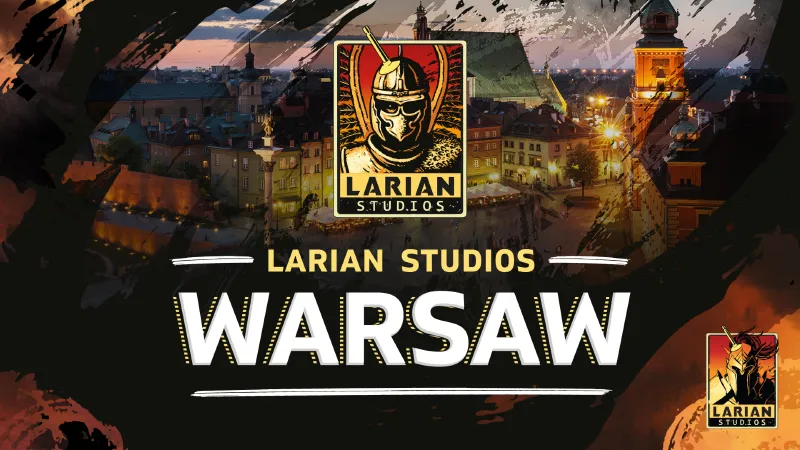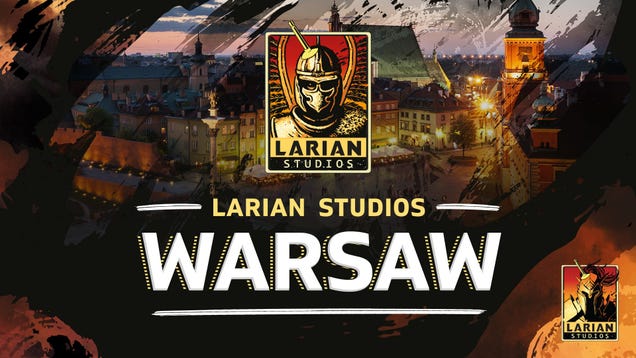
Homeworld 3 Multiplayer Review
This review covers the multiplayer modes of Homeworld 3. For thoughts on the multiplayer skirmish and War Games co-op mode, see the Homeworld 3 Single-Player Campaign review.
When coming up with a real-time strategy game’s multiplayer modes, a developer generally has two options: let us play with all of the toys in an all-out brawl until the other side is dead, with maybe a few minor twists thrown in, or try something new, different, and a little risky. In Homeworld 3, Blackbird Interactive has had it both ways, delivering both the bog-standard multiplayer skirmish match between Motherships and an inventive new co-op mode that, if the content continues to flow, has the potential to take on a life of its own.
There are few surprises to be found in skirmish if you’ve ever played a Homeworld game before – or even if you haven’t. It’s limited to team matches or free-for-alls with up to six players or AI bots, and it doesn’t really rock the boat with its straightforward “beat the other team” objective (you can set it to kill the mothership, kill all motherships and carriers, or kill every ship). There aren’t a ton of maps right now – just six, and only one that supports six players, though that’s a void that community-made maps should fill in short order. The only other real option is to turn off harvesting in favor of resource injections every minute (or you can have both) if you don’t want to bother with pesky logistics, but it’s precisely the sort of sandbox we need to make creative use of all of the ships Homeworld 3 offers. Heck, people would be up in arms if it weren’t here, and rightfully so.
Naturally you can’t pause the action like you can in the campaign, which can be frustrating as you’re getting the hang of ordering ships around these expansive areas of 3D space. But that’s balanced out by the fact that your opponents are struggling with the same thing, so it’s not as though you’re at an inherent disadvantage – unless you’re playing against the AI, which has its own weaknesses to compensate for. Learning to spin all of these plates at once while keeping your eyes on what’s important is part of the challenge (I tend to spend a lot of time in the zoomed-out sensor view here) and I felt myself getting better at it with every match.
The Hiigarans and the Incarnate fleets aren’t wildly different in how they play.
Much like previous Homeworld games, the two playable factions – the Hiigarans and the Incarnate – aren’t wildly different in how they play. The Incarnate, for instance, have no bombers but instead have more durable assault corvettes that fill basically the same role and have the same cloaking ability, and their multi-beam frigates are roughly equivalent to the Hiigarans’ ion canon frigates. Both sides have missile frigates as well, and their carriers, destroyers, battlecruisers, and turrets have stat differences that don’t really make you think outside the box when switching from one to the other.
Certainly, faction-specific tactics for each will emerge to capitalize on those subtle advantages – as well as things like the Hiigarans having superior scouting abilities thanks to their recon ships – but the thing that seems most significant in my experience has been how repair and capturing abilities are shuffled between ships. The Hiigarans have a dedicated support frigate that does nothing but repair damaged ships, but if you want to be sneaky and attempt to capture an enemy vessel you’ll have to pull one of your resource controllers off of mining duty and use it to attempt the abduction. The Incarnate remix this by putting the repair functionality on their resource controllers and using smaller, more fragile capture corvettes to do their pilfering – and they require two to survive long enough to latch on instead of one.
Having to choose between income and repair power is a big deal for an Incarnate player. In practice, though, having support frigates in the fray against a human opponent doesn’t shift the balance too much in the Hiigarans’ favor because anyone with a brain is going to target those first, and the Incarnate’s minor firepower advantage makes up for the rest.
If you don’t change Hiigaran fighters’ stance the moment they’re built, they’re as good as dead.
There’s one other difference between the Hiigarans and Incarnate that baffles me, though: the Hiigaran ships default to neutral stance, while the Incarnate default to aggressive. That sounds thematically appropriate, certainly, but it means that the Incarnate have a real advantage when it comes to building ships – especially strike craft – while under attack. Aggressive ships will immediately scramble and go after enemy ships that come into range, but neutral ships will fire back without moving other than to turn to face their attackers. When we’re dealing with small, fragile fighters, that means they’re sitting ducks and will get picked off almost immediately (probably before you notice you’re under attack), so if you don’t manually select them and change their stance or give them attack orders the moment they’re built, they’re as good as dead. That’s not a bug like some other issues, such as a voice chiming in to announce the loss of a resource ship that was actually the enemy’s or calling a corvette a frigate, but it might as well be.
What We Said About Homeworld 3’s Single-Player Campaign
Homeworld 3’s campaign goes out of its way to change up the style of missions we fight our way through as Imogen S’jet seeks out a missing Hiigaran fleet and faces an unhinged enemy. The resulting battle of wills feels more consequential than the off-screen galactic threat behind it. Relatively close-quarters scenarios have you guiding dozens of ships through eye catching gauntlets of asteroids and enormous space stations, and the dogfights and capital ship slug-fests that play out are a sight to behold. Being able to pause time and give orders makes managing your fleet much less overwhelming, especially given the tricky controls and sometimes disobedient friendly ship AI. Straightforward tech upgrades and a limited selection of ship types limit the campaign’s replayability, but building an armada and watching it tear through the enemy is always a satisfying sci-fi light show. – Dan Stapleton, May 10, 2024
Score: 8
Read the full Homeworld 3 Single-Player Campaign review
It’s impossible to know what will happen when Homeworld 3 is out in the wild and the most competitive players get hold of it, but in the matches I’ve played, the big trend has been that the Motherships are very active participants in the early fighting instead of hanging back, as they usually do in traditional Homeworld matches. Part of that is that these maps, which are largely based on those from the campaign, aren’t nearly as vast as Homeworld vets are used to, and also Homeworld 3’s Motherships are relatively quick to move and can get around easily. They’re also decently armed against fighters and corvettes, and you’ll need all the help you can get to keep the pressure off of your resource harvesters and defend them from rush attacks aimed at crippling your economy before you can tech up and unlock heavier ships. However, knowing when to pull back is crucial if you don’t want to be caught by destroyers and battlecruisers, because they’ll burn through your Mothership’s armor very quickly.
Motherships are very active participants in the early fighting.
Terrain also plays a significant role because it’s often close to resource patches, and that means you can cover it with heavy turrets (and anti-strike craft turrets to defend those) that’ll make short work of an enemy resource collector that autonomously wanders near. It’s also viable to turtle up by parking your Mothership near a floating platform, making it difficult for an enemy to get near without being bombarded by turrets and tripping over mines. Other than that, I haven’t found using terrain as cover terribly useful because it’s difficult to manage sight lines in real time for anything smaller and faster than a destroyer – but again, that doesn’t mean the community won’t find ways to do it.
Homeworld 3’s most exciting multiplayer mode, though, is War Games – I haven’t seen too many co-op modes in this vein since the Last Stand mode from Warhammer 40K: Dawn of War 2 – Retribution, and it’s given me thrills that remind me of those memorable battles. Alone or with up to two allies, you take control of a scaled-down fleet headed by a single carrier and build options decided by your chosen loadout; you’ll start with one focused on Hiigaran strike craft, but as you level up you’ll gain access to others that cater to bombers, missile frigates, Incarnate ships, and more. While it’s a bummer to not have access to heavy-hitting destroyers and battlecruisers, there’s a lot going on to make up for their absence, and you’ll generally want to be as mobile as possible.
You’re never entirely sure what you’ll get.
Rather than simply holding out against waves of enemies, you’re given randomized objectives to complete on a series of three maps: destroy a carrier, capture some points on the map, salvage some objects, escort AI-controlled ships, that sort of thing. You’re never entirely sure what you’ll get, so you’ll have to be at least somewhat flexible with how you gear yourself to handle what’s coming. Meanwhile, the incoming fleets keep getting stronger, so once you’ve completed your objective you have to make the decision of whether to hold out and scour the map clean of resources, or hyperspace jump to the next one to avoid taking more losses than those resources can replace.
There aren’t that many objectives, though – if you play through a handful of times you’ll see them all – so what really keeps each match feeling different from the last is the randomized artifacts that you’ll collect as you go. I quickly realized that scouting for and gathering them was one of the most important things to worry about when I arrived on each map.
Scouting for and gathering artifacts is a high priority when arriving on a new map.
Each one gives you a choice of three randomized upgrades for your fleet, such as buffing your fighters’ damage and armor at the cost of speed, unlocking more powerful tactical bombers or barrage missile frigates that launch twice as many warheads per volley, increasing your frigate unit cap at the expense of your strike craft cap, or enhancing up your carrier to crank out ships faster but also reduce its armor. There are a lot of possibilities that all stack together, and I often found myself pivoting away from what I thought would be my strengths toward a series of enticing upgrades that supercharged my assault frigates. I also found it easy to make the mistake of going too far and turning my fighters into glass cannons that melted under fire faster than they could take out a target, but that’s the kind of error most people probably won’t make twice as they learn to craft builds in any roguelike.
This format works well enough playing alone (though the third and final stage can be a beast to solo) but when you’re working with a team to specialize in different directions you can coordinate so that, for instance, one of you focuses on taking out enemy strike craft while the other burns down incoming destroyers as quickly as possible. That can come together in ways more than powerful enough to overcome the Incarnate destroyers, battlecruisers, and even Motherships that’re thrown at you, but don’t worry: there are plenty of options to upgrade the challenge, so I wouldn’t expect War Games to become a pushover anytime soon.
Blackbird clearly doesn’t either, because its roadmap for updates is focused around more content for War Games. Based on what I’ve played thus far, it’s a safe bet that it’ll have legs – so long as we keep getting more new rewards to unlock than the six fleet types that’ll all be available once you hit level 20 (I made it to level 11 as of this writing after about as many hours of play).
Another thing that will certainly expand on the longevity of Homeworld 3 is mods, and there’s a handy section of the menu where you’ll be able to select them. Eventually, that is – the actual implementation of that and the release of the official mod tools has been pushed back from launch. Even so, I’m encouraged by the fact that Blackbird is giving modding the prioritization that it deserves. Homeworld has a long, proud history of mods that includes some of the finest Star Wars and Star Trek (among others) total conversions ever created, and I look forward to that tradition carrying forward.







